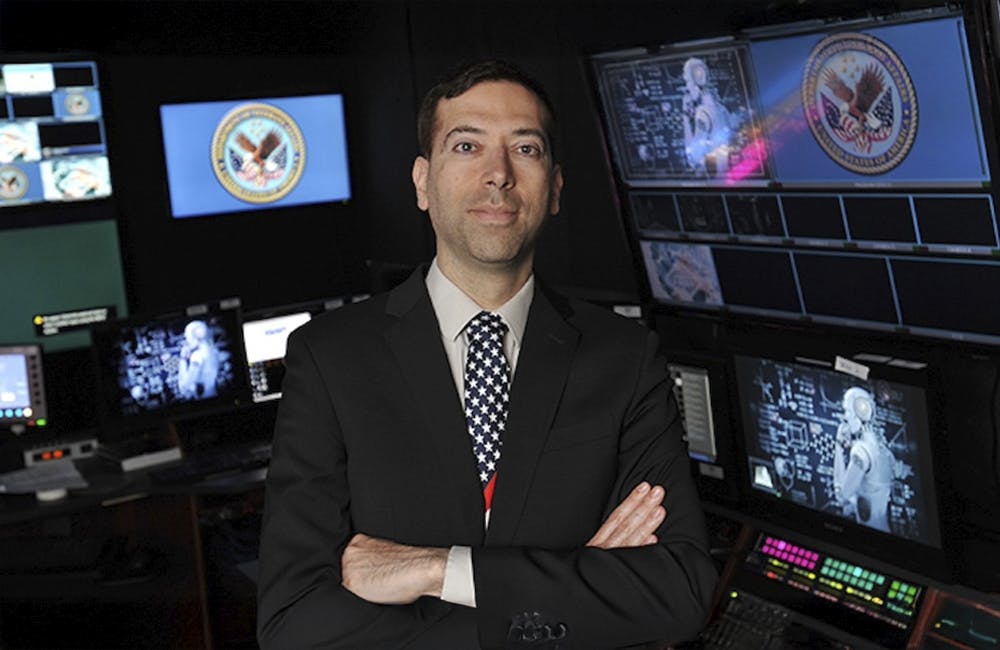State Cyber Plan for Digital Solidarity Tackles Tech Diplomacy
Recent federal agency plans emphasize international collaboration against cybercrime and adversaries amid emerging technology priorities.

The State Department’s cybersecurity plan released last month emphasizes “digital solidarity” to harmonize White House directives, leverage emerging technology like artificial intelligence responsibly and tackle cybersecurity threats both in the U.S. and abroad.
“Digital solidarity really has three components: how we help countries build their digital ecosystems, how we come to their assistance if they’re suffering from digital harm and how we help their capacity building,” Adam Segal, senior adviser to the State Department’s Bureau of Cyberspace and Digital Policy, told GovCIO Media & Research. “It’s meant as a counter position to this idea of digital sovereignty that many authoritarian states are promoting.”
The strategy, which State announced during the RSA Conference in May, has four main areas of action: building a comprehensive digital ecosystem, aligning digital and data governance with international partners, creating standards for responsible cyberspace behavior and strengthening international partnerships to combat cybercrime.
“We are trying to ensure that the U.S. is working with partners and stakeholders globally to make sure that how we deploy, develop and use technologies is in a rights-respecting manner,” Segal said.
The agency created the plan in response to the White House’s National Cybersecurity Strategy and the National Security Strategy to enhance cybersecurity in public and private systems. Segal said it focuses on global partnerships and emerging technologies, like 5G and subsea cables.
“We are working with other like-minded countries to help push what’s called a program of action,” Segal said. “We’ll be more focused on implementation of the actual norms of agreement about how states should behave.”
State Bureau of Cyberspace and Digital Policy Ambassador-at-Large Nathaniel Fick noted in a foreign press briefing the U.S. and China began discussing ways to address AI safety with a May 14 meeting in Geneva.
“It’s imperative that the United States and China find ways to collaborate on uses of AI for the common good of humanity around the world,” Fick said. “This dialogue is, we hope, the beginning of a communications channel in support of that objective that will allow the United States and China to find areas to collaborate and work together, even as they compete in other areas.”
State Secretary Antony Blinken cited the war between Russia and Ukraine as a catalyst for industry cooperation in cybersecurity where digital solidarity can help hold bad actors accountable.
“We help them harden their networks, migrate vital government data to the cloud, bolster the resilience of national communications, and other critical infrastructure. That is digital solidarity in action,” Blinken said at RSA. “It’s the kind of collaboration that we want to scale and apply around the world.”
Digital solidarity means the U.S. and its partners work together and align on issues surrounding emerging technologies.
“One of the lessons of digital technologies is it’s hard to go alone. The U.S. and its allies are stronger if we all work together pursuing digital solidarity,” Segal said.
The strategy prioritizes working with partners from the public, private and civil society across the globe. Segal said some may see the strategy as “with the U.S. or against,” but emphasized that it’s moreso about helping all countries with development, economic and technological goals.
“The U.S. working with Australia, Japan and other partners has a lot of success recently and helping [provide] subsea cables to a number of the Pacific Island countries as well as providing support around cloud and other internet services,” Segal said.
Both State’s strategy and the White House’s National Cybersecurity Strategy are “like nesting dolls,” Segal said. State is leading some of the goals outlined in the White House strategy, like ransomware initiatives and strengthening international engagement.
“The increased availability of commercial spyware is a challenge that, again, was going to take not just public-private partnership, but international allies to work on this challenge of [cybercrime] that impacts all of us,” said National Cyber Director Harry Coker at RSA.
This is a carousel with manually rotating slides. Use Next and Previous buttons to navigate or jump to a slide with the slide dots
-

Trump’s Executive Order Spurs Federal Push for AI Literacy
Agencies are ramping up AI literacy efforts across the federal workforce and education systems after Trump's executive order on AI education.
5m read -

AWS Summit: A DOE National Lab Uses GenAI to Boost Efficiency
Lawrence Livermore National Lab launches a new generative AI tool to drive operational efficiency at the National Ignition Facility.
9m listen -

VHA’s AI Chief Led NIH’s New AI RFI
The agency's AI chief Gil Alterovitz helped develop a plan that hints at how NIH is charting the future of AI and biomedical research.
5m read -

DOE National Labs Launch New AI Tools for Operational Efficiency
The Energy Department's National Laboratories are using AI to increase operational efficiency and drive research efforts forward.
3m read








